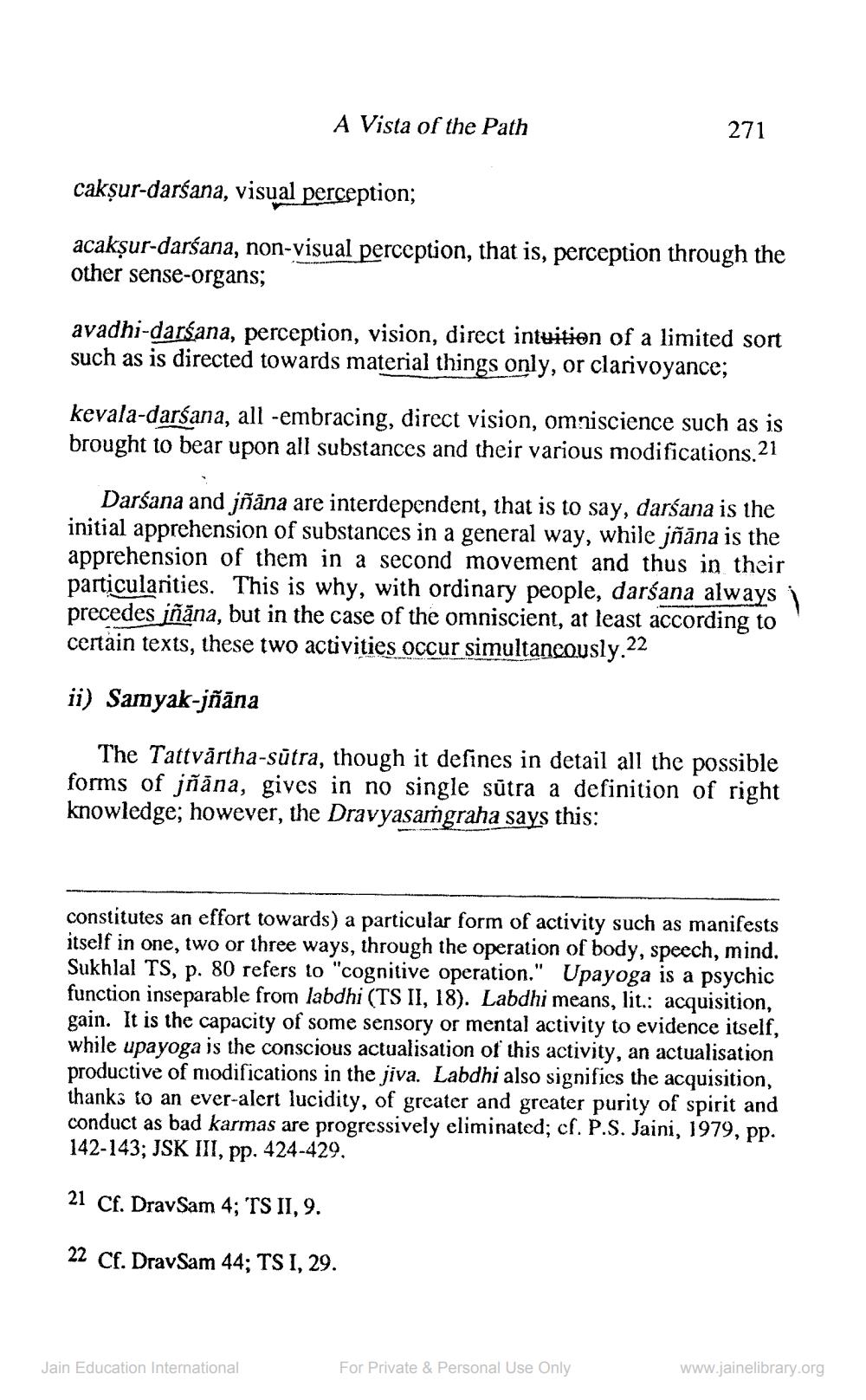________________
A Vista of the Path
271
cakşur-darśana, visual perception;
acakşur-darśana, non-visual perception, that is, perception through the other sense-organs;
avadhi-darśana, perception, vision, direct intuition of a limited sort such as is directed towards material things only, or clarivoyance;
kevala-darśana, all -embracing, direct vision, omniscience such as is brought to bear upon all substances and their various modifications.21
Darśana and jñāna are interdependent, that is to say, darśana is the initial apprehension of substances in a general way, while jñāna is the apprehension of them in a second movement and thus in their particularities. This is why, with ordinary people, darśana always i precedes iñana, but in the case of the omniscient, at least according to certain texts, these two activities occur simultaneously.22
ii) Samyak-jñāna
The Tattvärtha-sútra, though it defines in detail all the possible forms of jñāna, gives in no single sūtra a definition of right knowledge; however, the Dravyasamgraha says this:
constitutes an effort towards) a particular form of activity such as manifests itself in one, two or three ways, through the operation of body, speech, mind. Sukhlal TS, p. 80 refers to "cognitive operation." Upayoga is a psychic function inseparable from labdhi (TS II, 18). Labdhi means, lit.: acquisition, gain. It is the capacity of some sensory or mental activity to evidence itself, while upayoga is the conscious actualisation of this activity, an actualisation productive of modifications in the jiva. Labdhi also significs the acquisition, thanks to an ever-alert lucidity, of greater and greater purity of spirit and conduct as bad karmas are progressively eliminated; cf. P.S. Jaini, 1979, pp. 142-143; JSK III, pp. 424-429.
21 Cf. DravSam 4; 'TS II, 9.
22 Cf. DravSam 44; TS I, 29.
Jain Education International
For Private & Personal Use Only
www.jainelibrary.org




